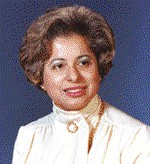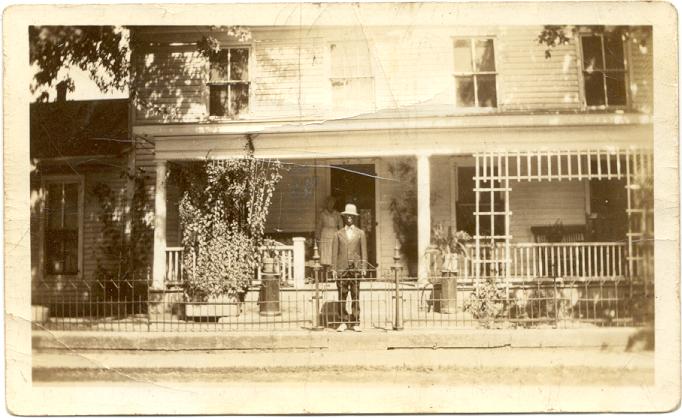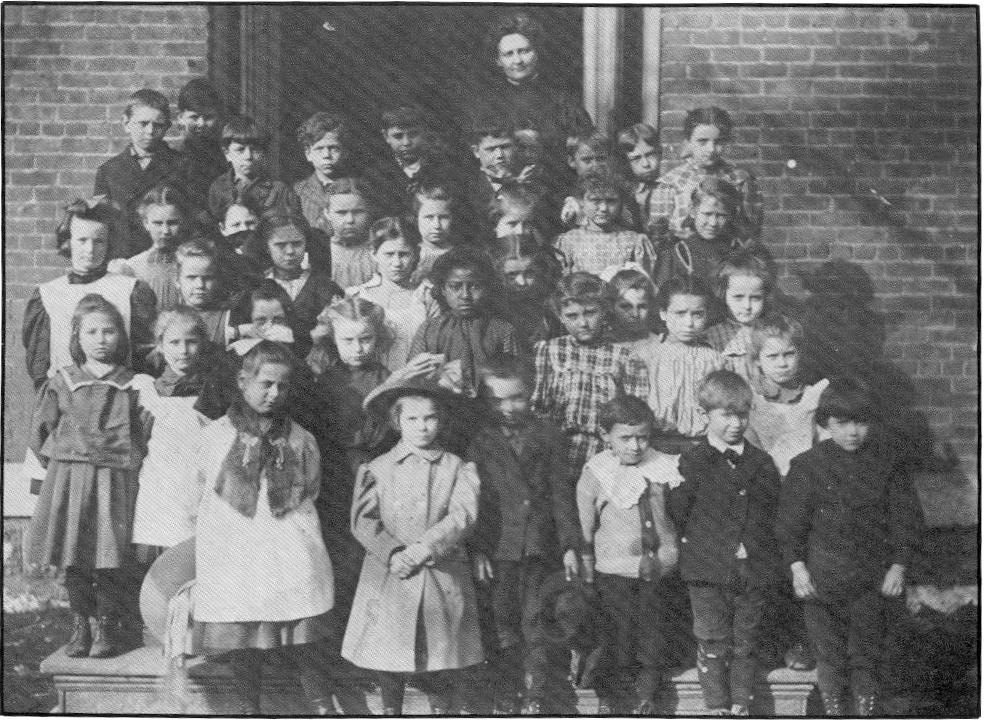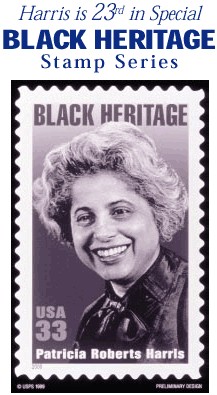|

Patricia Robert Harris, a Native of Mattoon,
IL. She was the first African American woman to hold a U.S.
ambassadorial position when she was named U.S. ambassador
to Luxembourg by President Lyndon Johnson in 1956.
|
|

Delia Brown, a young black girl was born
in 1872 in Ohio and came to Oakland, IL around 1884. She grew
up in Dr. Hiram Rutherford's home. She is the lone black girl
in the school picture.
|
|

Joe Haddock in front of Dr. Hiram Rutherford's
house, c. 1890's.
|
|

Joe Haddock in his cowboy clothes. He came
to Oakland, IL as a child in company of horse traders at the
age of ten. He was deserted and the Rutherford children brought
him home to give him clothes and food. He grew up in the household
and worked for the local telephone company.
|
|

The first grade class of 1907, at North School
in Mattoon, IL with their teacher Miss Katrine Morgan, who
later became Lincoln School's Principal. Note and unidentified
black girl in the center of the picture.
|
|

Picture of Patricia Roberts Harris of Mattoon,
IL on a United Postal Service Black Heritage Stamp Series.
The stamp was issued in 2000.
|
|
Her daughter Judith Williams-Lyles also suffered
the same fate as a young girl growing up in Mattoon. When she attempted
to swim in a public pool in Mattoon she was denied. Mr. James Williams,
Judith's father, remarked that "This is the first incident
that stands out that affected my family... I can't swim today on
account they wouldn't let blacks swim in the pool that's the reason
I took it to court." (58) Judith was finally allowed to swim
at the pool. Hence, the case was never tried in court. She believes
having friends and family make a difference in coping with the situation.
Mr. Williams also complained of job discrimination in 1940's Mattoon.
In his words:
Yeah back during World War II Atlas Diesel it
was— ran an ad for help and so I went up there to put my application
in and I had to go through the unemployment office and I never did
hear from them —so about a week or so I went back to the unemployment
office well I put my application in and every time I pick up the
paper they got an ad in there that they need help. I said, I'm capable
of doing the work. I said, I'll come back here next Monday and you
are going to tell me why they have not called me— you check
into it and find out. I came back that next Monday and he said well
you wouldn't want to work where they didn't want you would? I said,
why didn't you tell me that in the first place so about a week or
so, I had a friend working up in Rockford you know— in a foundry
plant and he said well you can probably get on up there. We left
on a Sunday night got into Rockford and didn't have a place to stay,
waited for the plant to open up put in my application and at 10:00
I was working. Well that's the difference in your own home town
wouldn't even hire you. (59)
The Williams family also faced housing discrimination.
When they tried to rent accomodation from white landlords, they
were turned down. This might explain the clustering of black families
in certain neighborhoods in Mattoon. A survey gleaned from city
directories and census records in Mattoon by Whitmal revealed that
"It appeared as if there might be a distinct black community
in the city. There seems to be some clustering of black families
in the same areas. The majority of the dwellings tend to be in the
vicinity of the black churches at 523 N. 20th Street and 2520 Shelby
Avenue." (60) In order to counter the dominant racial attitude
towards blacks by white, some blacks have, over the years, felt
that acquiring saleable skills and higher education will guarantee
social mobility thereby reducing the effects of racial discrimination.
The establishment of Eastern Illinois State Normal
School in 1895 by the Illinois General Assembly provided African
Americans such opportunities. It is not clear when African American
students were first admitted to the school. Available records show
that Zella F. Powell, a member of the prominent Powell family of
Mattoon might be the first black graduate of the school in 1910.
Following her graduation she became a private teacher in Mattoon
between 1910 and 1914. She then continued her education at the Chicago
Normal School from 1914 to 1916. From 1916 to 1917 she was a Substitute
Teacher in an elementary school in Chicago. And from 1917 to 1922,
she was hired as a full-time elementary school teacher in Chicago.
(61) Another prominent Mattoon resident. Ms. Bernice Gray graduated
from the same school in 1928. Meanwhile the institution had been
renamed Eastern Illinois State Teachers College in 1921. Miss Gray
was one of five children all of whom went to and graduated from
college. Two members of her family went on to obtain advanced degrees.
She later taught at Webster Grove, Missouri about ten miles west
of St. Louis for some years before returning home to Mattoon when
she began to experience failing eyesight. Miss Gray continued to
serve her black community in her private capacity.
Captain Charles Blakely Hall was another famous
black Alumnus of Eastern Illinois University. He attended Eastern
from 1938 to 1941 when he enlisted into the Army. He made his mark
in the military as an ace fighter pilot during World War II with
the famous "all--Negro" 99th Fighter Squadron. Recounting
Hall's achievements, Charles H. Coleman wrote:
On July 2, 1942, in Sicily, he became the first
American negro pilot to shoot down an enemy plane. Later in the
Italian campaign he shot down two other German planes. Captain Hall
became Flight Leader of the "All-American" Flight, and
third in command of the 99th Fighter Squadron. He flew more than
75 fighter plane missions against the enemy. At Eastern Captain
Hall played on the 1938 and 1939 football teams. (62)
|

